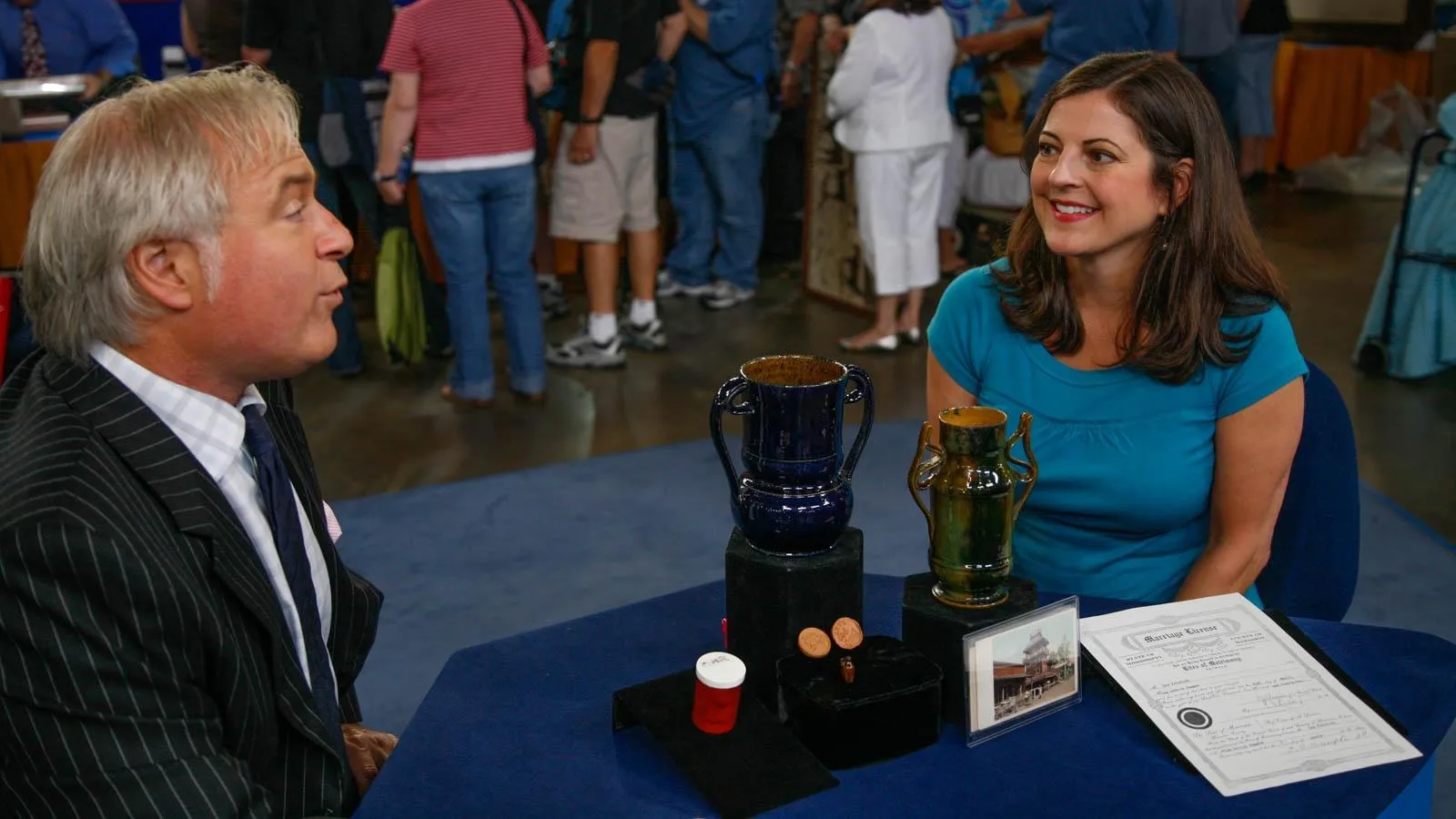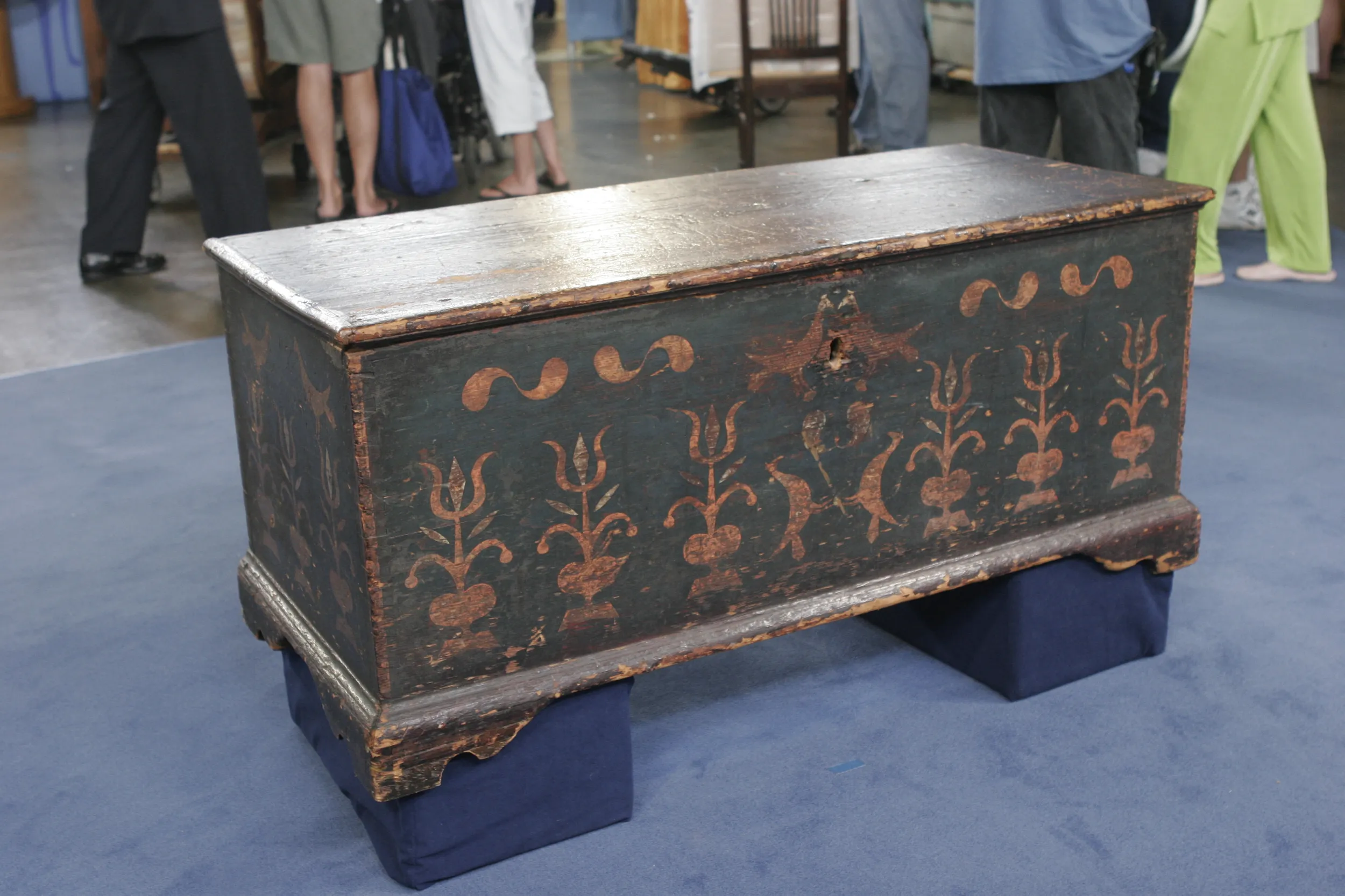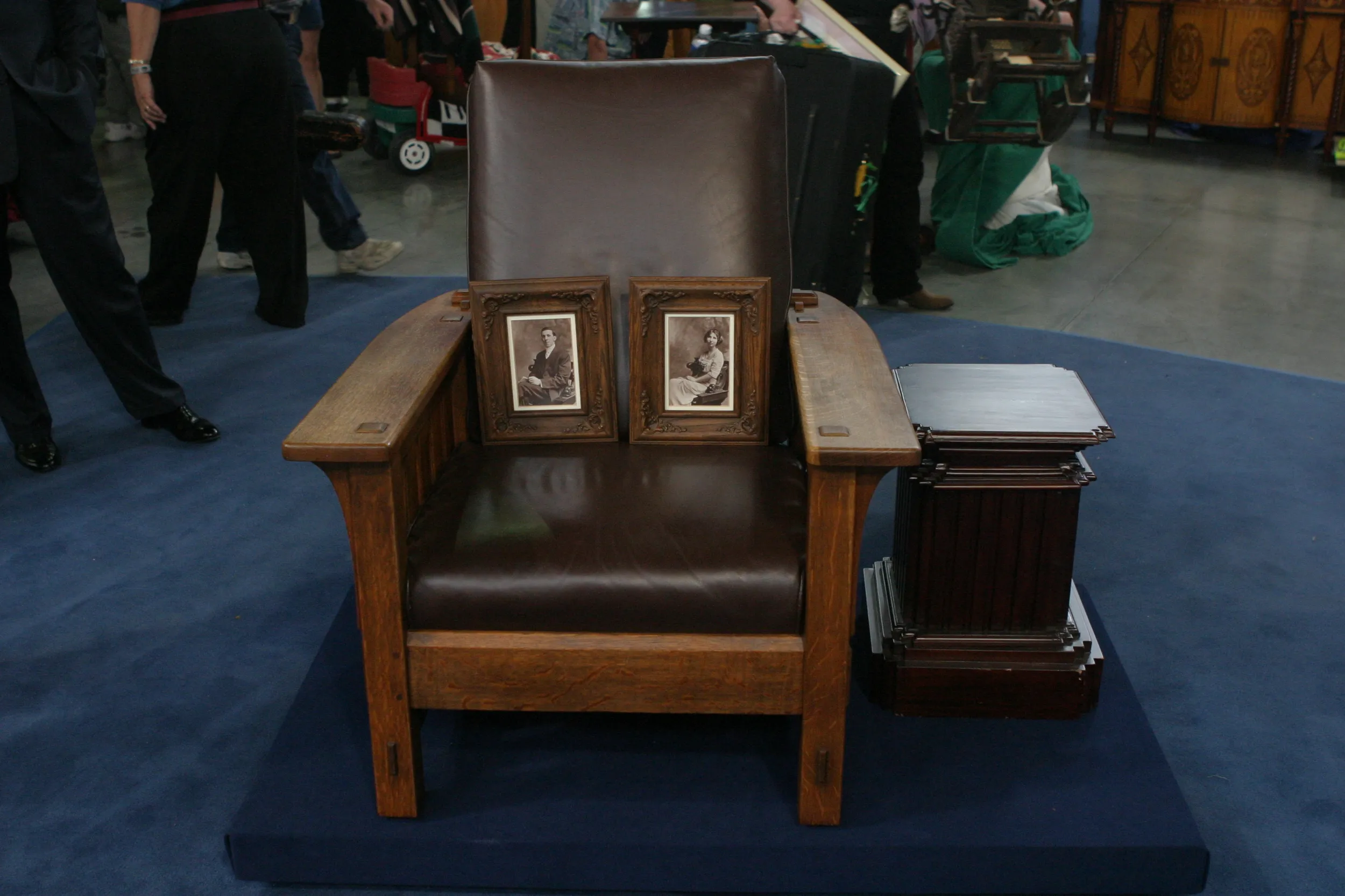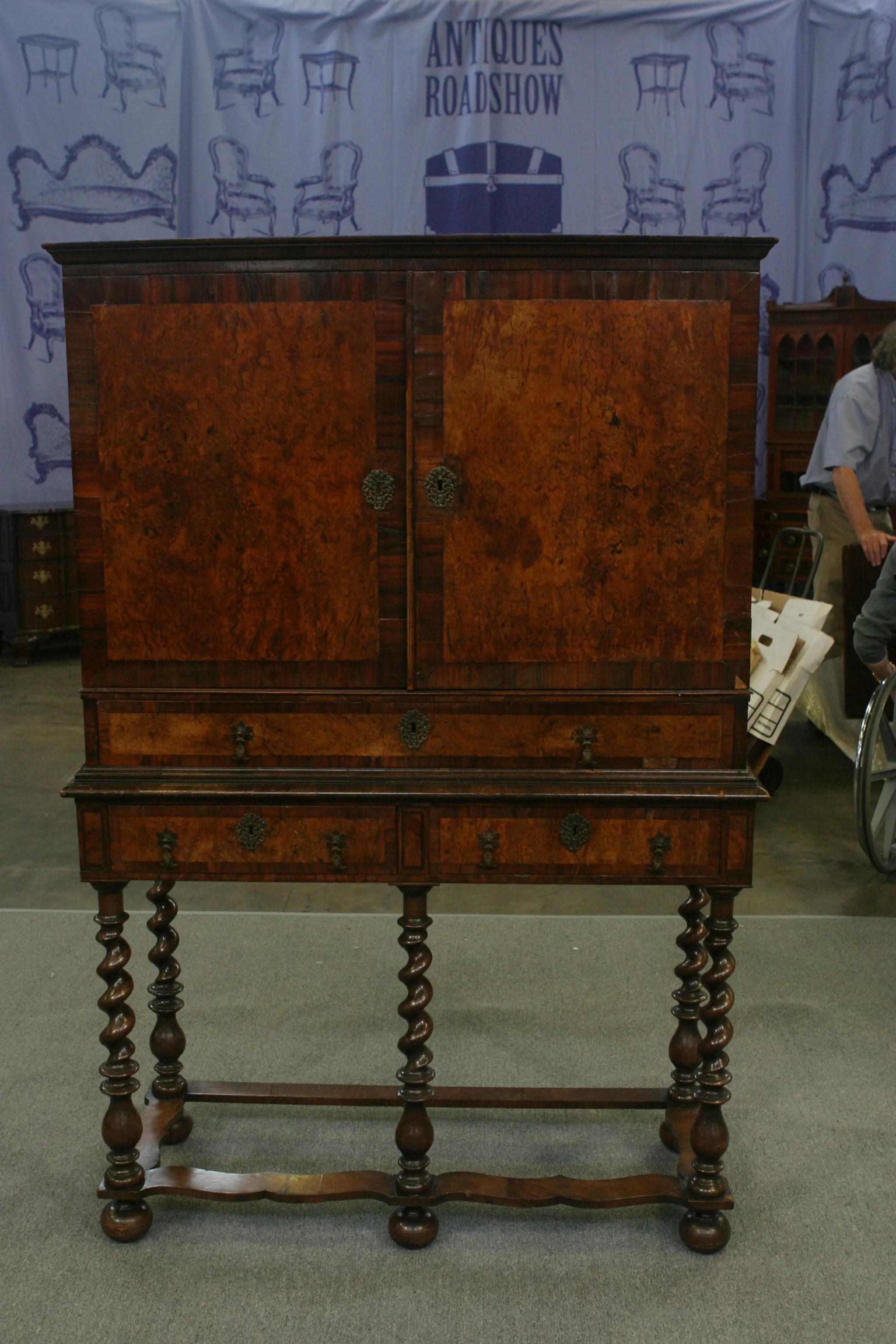GUEST: I found this desk, and it had been abandoned in a barn that my grandparents were buying in East Texas. The people that were selling them the farm said that a relative of theirs had cut down the tree and made this desk, and they weren't taking it with them. They were just leaving it. When I found it, the rats had nested in the drawers. It was covered with thick black paint. It was destined for the burn pile. I was a very young woman. I asked my grandmother if I could have it and she said yes, so I took it and stripped it, and, and here is the desk you have.
APPRAISER: This is not the prettiest girl at the dance.
GUEST: No, it's not, it's very humble.
APPRAISER: But it's fabulous as an example of vernacular furniture. It most definitely appears to be a Texas desk...
GUEST: Mm-hmm.
APPRAISER: ...from Southeast Texas. That's the land-- still is-- of, uh, harvesting yellow pine.
GUEST: Oh!
APPRAISER: And that is the principal wood which is used...
GUEST: Mm-hmm.
APPRAISER: ...in the construction of this piece. You can see that the maker went to considerable efforts to incorporate the wonderful wild graining.
GUEST: Mm-hmm.
APPRAISER: And that's achieved by doing bias, or diagonal, sawing of the, of the wood to achieve this effect. The style of the piece is really sort of an extension of late classical design in the 19th century. There was a style in the 1840s called pillar and scroll design.
GUEST: Oh!
APPRAISER: And this is a local interpretation of that particular style. It's had a little bit of damage up here on the top.
GUEST: Mm-hmm.
APPRAISER: That backboard probably had little scrolls...
GUEST: Oh, okay.
APPRAISER: ...originally that have broken off.
GUEST: Mm-hmm.
APPRAISER: But that's not a major problem. The hardware on the piece-- these wonderful porcelain white knobs...
GUEST: Mm-hmm.
APPRAISER: ...there's no indication that there was anything else on the piece, and so those may be original to it.
GUEST: Wow.
APPRAISER: These scrolls are very interesting in that they function not only as decoration...
GUEST: Mm-hmm.
APPRAISER: ...but turn this into a support for a desk. And, with your help...
GUEST: Yes.
APPRAISER: ...if we can just pull this out. We'll hold that in, extend the legs.
GUEST: There.
APPRAISER: There we go. For a pretty simple piece of furniture...
GUEST: Mm-hmm.
APPRAISER: ...that's a pretty elaborate kind of mechanism.
GUEST: It is, mm-hmm.
APPRAISER: And if we look inside, we have these two banks of drawers and we have this wonderful wavy grain...
GUEST: Mm-hmm.
APPRAISER: ...which is typical of yellow pine. A piece like this you have to put in the context of where it was made...
GUEST: Mm-hmm.
APPRAISER: ...and when it was made, and Texas in the 1850s, '60...
GUEST: Wow.
APPRAISER: ...was a pretty rough, wild place, and there were not a lot of imported pieces of furniture.
GUEST: Uh-huh.
APPRAISER: They made do. A piece like this has probably more historical...
GUEST: Mm-hmm.
APPRAISER: ...value and interest, and I would think that, in terms of value, a group of Texas collectors, or Texiana collectors...
GUEST: Uh-huh.
APPRAISER: ...uh, bidding against each other at an auction might push this up to $2,000 to $2,500.
GUEST: Wow! My humble desk! That's awesome. (laughs)
APPRAISER: And so you're not going to throw it out now.
GUEST: Not going to throw it out. I'm not gonna, I'm not gonna put it on the burn pile now. (laughs)








